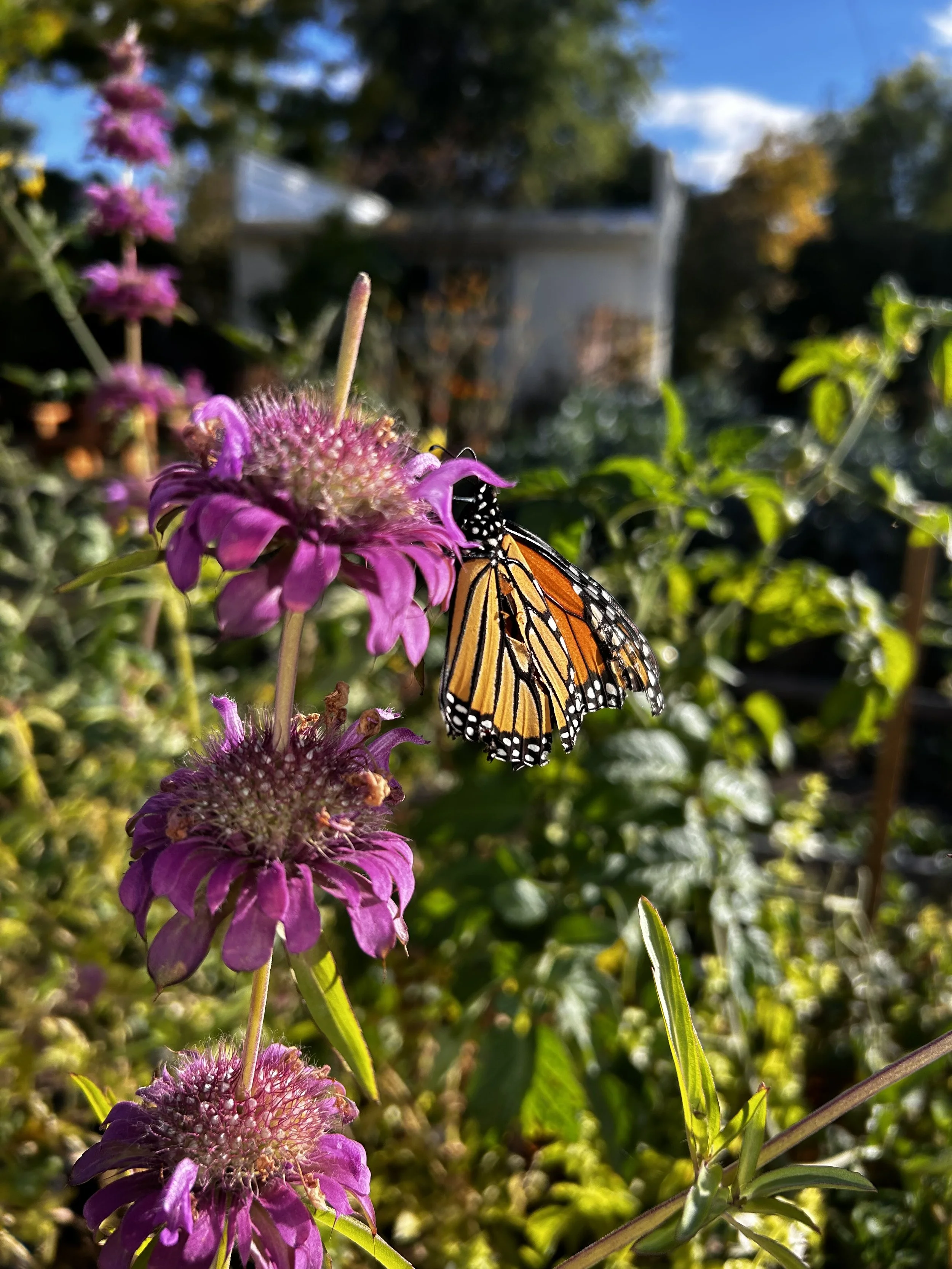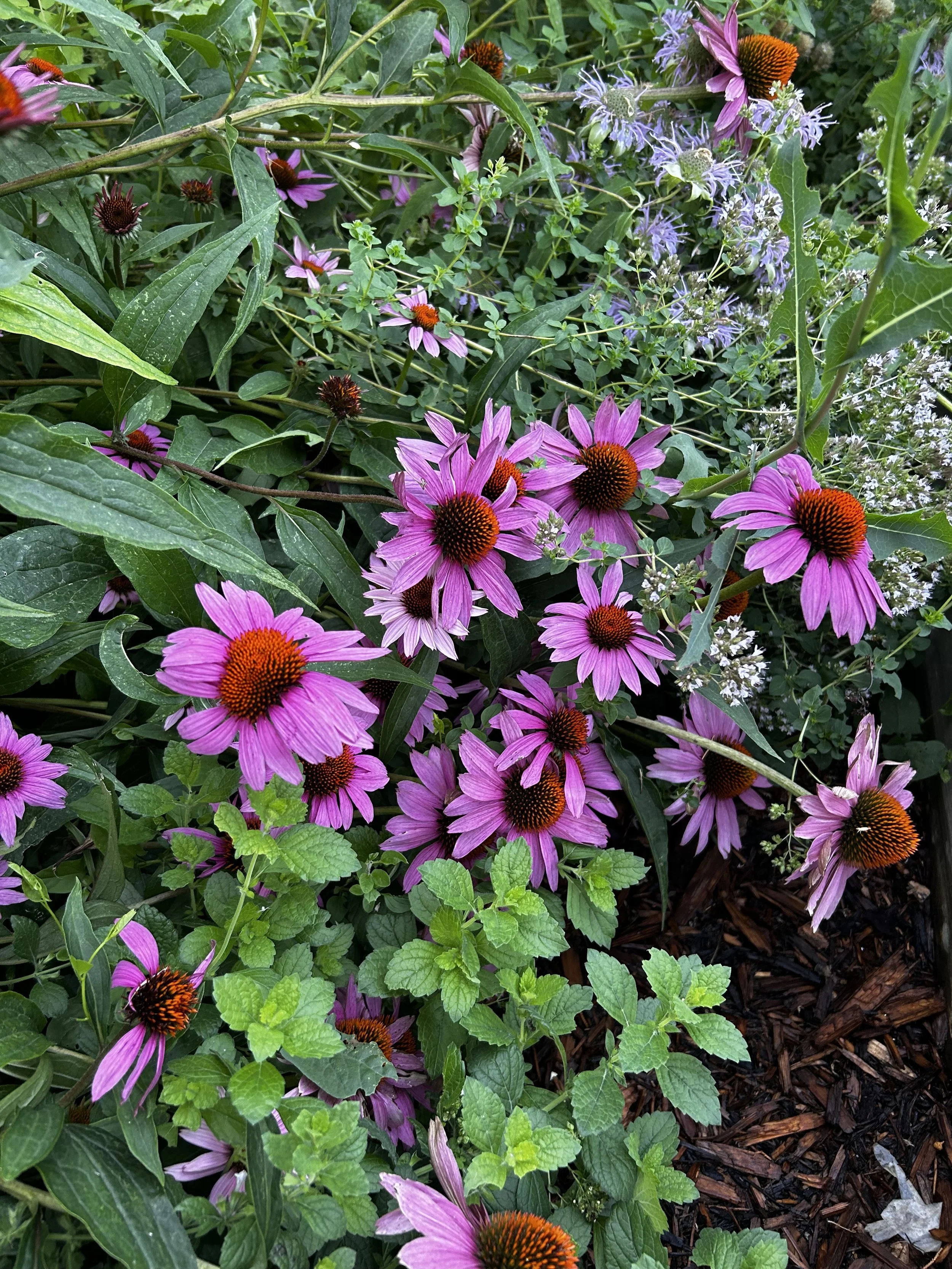
Frequently Asked Questions
My backyard compost pile never really seems to decompose very well. Can I put these red wigglers in the pile to speed things up?
I recommend thinking of worm composting and composting in heaps as two different processes. Composting worms do not thrive in the hot environments that composting in heaps ideally creates. Red wigglers prefer to feed just a few inches under the surface, and tend to do better in wider, shallower set ups. While you certainly can add worms to your cold compost pile and they may do fine, you’ll likely have more success starting out with a simple worm bin set up separate from your main compost pile (if you have one).
What do composting worms eat?
Food scraps: As food scraps begin to decompose, microbes soften the plant tissues to form a bacterial slurry that worms eat. Worms don’t have teeth so the best choices are foods that are soft and moist.
Carbon-rich bedding: Things like shredded paper, fallen leaves, coconut coir, etc.
Grit: Worms eat small amounts of grit such as sand or finely ground egg shells, to help grind up their food in the digestive tract.
What foods do worms love most?
Favorites include avocado, pumpkin, salad greens, watermelon rind, banana peels, apple cores, zucchini, coffee grounds.
Coffee grounds, really? I heard coffee grounds make the bin too acidic.
Red wigglers love coffee grounds, but use them in moderation.
What foods should worms avoid?
Onions, garlic, citrus peels, and anything with a lot of oils or salt. Very nitrogenous materials, like grass clippings, should be avoided as well.
How often should I feed?
About once a week is right for most setups. In general, you should feed when the food scraps you put in originally are gone. Always cover the food with 2-3 inches of moist bedding, because red wigglers prefer to feed below the surface. At first, err on the side of adding too little food into the bin, then slowly increase the food over time.
What do I do if my bin is too wet? Or too dry?
Your bin should never have standing water in it. Excess water fills in the air spaces, making it impossible for worms to breathe through their skin. On the other hand, worms need to stay moist at all times, so if your bin is too dry, the worms will be stressed out and may risk everything to move to “greener pastures.” Simply put, they may try to escape a dry bin. The answer to most problems with you worm bin is to add bedding. Dry bedding when your bin is too wet, moist bedding when your bin is too dry.
I am going to Italy for the next three weeks, do I need to arrange for someone to come feed my worms every day?
Absolutely not. Once your bin is well established and you understand your worms needs and habits, you can leave your worm bin alone without any care for up to a month at a time. In fact, worms generally prefer to be left alone. In nature, it is rare that they are disrupted, and they almost never see the light of day.
I see there are air holes in worm bin set ups. Do I need to put a screen over these so the worms can’t escape?
No, red wigglers are not escape artists, which is why they are a great option for home vermiculture. If the conditions are good inside the bin, they’ll stay in the bin. Conditions outside of the bin are generally so dry that there is not much reason for worms to leave the bin unless things have gone really wrong inside (i.e., not enough moisture or not enough oxygen).
Should I keep my worm bin indoors or outdoors?
Either way! Indoors has the advantage of being able to actively compost year-round, so you can dig your hands into warm black dirt even when the ground is frozen solid. Outdoors has the advantage of being more socially acceptable, and just feels right to a lot of people. If you choose to keep your bin outside, it absolutely must be in the shade during the heat of the summer, and you will need to monitor more often to make sure it’s not overly wet, overly dry, or too hot. Indoor set ups need less monitoring. Keep in mind that if you keep it outdoors, other insects will surely get into the bin. This is not a problem except that you may not want to bring a bin containing other bugs indoors when it gets cold out. The solution to this is to, when it gets cold in the fall, say around October, separate out enough worms by hand to start a new colony indoors.
Overall, the easiest way is to keep your bin indoors. We have kept worms indoors for years and they have never once tried to escape the bin and there is no odor whatsoever.
Are these worms invasive? How do I know for sure?
This is an excellent question. The red wigglers we sell are not invasive, but everyone should be aware that invasive worms do exist. Asian jumping worms are spreading across many areas in the US but have never been found in Wyoming - yet. Asian jumping worms are devastating to both the garden and natural environments, because they strip the soil of organic matter and leaf litter, making the soil less fertile. Asian jumping worms have been introduced into many places in the US through use as fishing bait, and further spread around by moving soil, mulch, potted plants, etc. We recommend this website from the University of Minnesota to educate yourself about Asian jumping worms for your awareness and identification:
Emma’s professional background includes expertise in invasive species biology, and we maintain a high level of awareness of Asian jumping worms even though they haven’t been found in Wyoming yet. Due to low population and harsh climate, Wyoming is often one of the last states that invasive species move in to. Shipping worms and soil amendments around the country inherently carries risk of moving invasive species around. We believe in keeping garden inputs as local as possible to reduce the chance of spreading invasive species; this is a major reason we produce our own worms and other composts on our production site. We started this business so western Wyoming gardeners can source composting worms as locally as possible, without worrying about bringing invasive species into our state.


